 Kang continues to show his range and vision as a composer and ensemble leader. Visible Breath is a startling album which takes many of the strands of 20th century composition and weaves them into new musical fabrics, far from imitation and full of innovation. His music hangs like a specter in the room, the notes either merging into each other like a ghost passing through a wall.
Kang continues to show his range and vision as a composer and ensemble leader. Visible Breath is a startling album which takes many of the strands of 20th century composition and weaves them into new musical fabrics, far from imitation and full of innovation. His music hangs like a specter in the room, the notes either merging into each other like a ghost passing through a wall.
- Administrator
- Albums and Singles
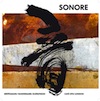 As the title suggests, this live album was recorded in London’s current hot spot for weirdo music and finds the trio taking their work further into the inner recesses of free improvisation. As expected, given their track record as a group and as solo performers in their own rights, Café Oto/London swerves between danger and calm; safety and turmoil. Every adjective ever thrown at free jazz is applicable but, more often than not, inadequate.
As the title suggests, this live album was recorded in London’s current hot spot for weirdo music and finds the trio taking their work further into the inner recesses of free improvisation. As expected, given their track record as a group and as solo performers in their own rights, Café Oto/London swerves between danger and calm; safety and turmoil. Every adjective ever thrown at free jazz is applicable but, more often than not, inadequate.
Each member of the group takes a turn leading the proceedings with Ken Vandermark firing the opening barrage on "Fragments for an Endgame." Immediately, I am drawn into the space between the saxophones and I feel like I am being kicked between the three of them like a ball. Their three distinct voices come through, each one taking a different attack on us listeners. However, from time to time the lines become blurred between the players. They seem to move in and out of phase with each other, forming a tight coil of sound before spinning apart again.
Mats Gustaffson takes up the baton with "(I Was Arranging Her) Arms." The title sounds like a line from J.G. Ballard’s Crash and it is easy to imagine this playing through the car radio as Dr. Vaughan positions himself and his female travelling companions into the poses of the car crash victims he studied. Violent and erotic, Sonore play with a fleshy quality that occasionally tenses into hard, unyielding muscle. They lumber, they threaten, and they swagger through the notes–I move out of the way rather than start something that I can’t finish. Even the distorted strands of "Happy Birthday" sound like a threat rather than a celebration.
On "Le Chien Perdu," Peter Brötzmann takes control of Sonore and opens up the music with a buzzsaw (or is it a saxophone, it is hard to tell sometimes). Once the organs and bare bones have been revealed, Brötzmann takes the group down a notch into a contemplative and introspective mode with only an intermittent flurry of frenetic activity to remind the listener that the skronk is still there, lurking. "Le Chien Perdu" erupts towards the end before giving way to "Oto" where all three members of Sonore go forward together into the stratosphere. One of the players sounds like he’s plucking a muted stringed instrument rather than a woodwind as the other two tear up the floor boards of Café Oto. The trio intensify their performance to a climax before finishing with a tender, warm melody completely at odds with the preceding thirty-odd minutes. Yet it resolves the performance perfectly, as menacing as Sonore got, they were nice guys all along.
samples:
 
Read More
 As the title suggests, this live album was recorded in London's current hot spot for weirdo music and finds the trio taking their work further into the inner recesses of free improvisation. As expected, given their track record as a group and as solo performers in their own rights, Café Oto/London swerves between danger and calm; safety and turmoil. Every adjective ever thrown at free jazz is applicable but, more often than not, inadequate.
As the title suggests, this live album was recorded in London's current hot spot for weirdo music and finds the trio taking their work further into the inner recesses of free improvisation. As expected, given their track record as a group and as solo performers in their own rights, Café Oto/London swerves between danger and calm; safety and turmoil. Every adjective ever thrown at free jazz is applicable but, more often than not, inadequate.
 As the title suggests, this live album was recorded in London's current hot spot for weirdo music and finds the trio taking their work further into the inner recesses of free improvisation. As expected given their track record as a group and as solo performers in their own rights, Café Oto/London swerves between danger and calm; safety and turmoil. Every adjective ever thrown at free jazz is applicable but, more often than not, inadequate.
As the title suggests, this live album was recorded in London's current hot spot for weirdo music and finds the trio taking their work further into the inner recesses of free improvisation. As expected given their track record as a group and as solo performers in their own rights, Café Oto/London swerves between danger and calm; safety and turmoil. Every adjective ever thrown at free jazz is applicable but, more often than not, inadequate.
- Administrator
- Albums and Singles
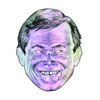 Across 13 tracks of sample abuse and digital detritus, the debut album from this duo is a hyper-kinetic, violent outburst of occasionally musical noise that mixes up some odd concoctions that sometimes work, and sometimes don't.
Across 13 tracks of sample abuse and digital detritus, the debut album from this duo is a hyper-kinetic, violent outburst of occasionally musical noise that mixes up some odd concoctions that sometimes work, and sometimes don't.
To some extent I was reminded of the early Digital Hardcore days when listening to this album for the first time.Not necessarily that they sound the same, but both capture that same sense of caffeine fueled spastic electronic fun, though here it is abstracted even further into a noisier mess, without the overuse of 909 beats and guitar samples that DHR always worked with.
The problem is, however, just like the DHR scene, fatigue sets in rather quickly when listening to the album in a single setting.Like the chaotic ambience and flashing lights of the video arcades that inspired the record, it quickly becomes a sensory overload, gelling into a mess of mid and high-range noises, all pushed into the red.
In smaller bites, however, it’s pretty palatable:the modem-tone like rhythms of "Shining Figures" pile up into big blasts of sound and echoed voices, coming across with the bombast and aggression of '80s metal.Both "Pushing Buttons" and "A Year On The Toilet" go for a more synth-punk blast feel, all rapid fire and overdriven screams.
It's on tracks like "Razed From The Bottle" that great moments shine through:maxed out loops start out kind of danceable, but are soon blown up into a full on blast of grindcore like squall that works great together.While "Chrome Violence" is still noisy as all hell, there almost seems to be a synth-pop heart beating at the core of the otherwise fuzzed out beast, making it a standout.
"Plastic Bubble Byter" also makes some concessions for conventionality, with the abstract digital noise outbursts that open the track eventually being melded into something a bit more catchy.Going the other direction is "Xzrzrz," which, with its brittle, droning electronics come across as more ambient and deliberate, rather than the hyperactivity that preceded it.
Somewhere near that intersection of synth-driven music and balls-out noise is The Real Sounds From Hell Recordings . As I have said, it is a bit abrasive to try and take in all at once…while I can sit through an hour of the Incapacitants just fine, I think it's the constant shift between noise and music, often within the span of a second, that makes it more difficult to absorb.My first full listen was not an overall enjoyable experience, but when I came back and gave it a go in smaller doses, I found it to be a much more enjoyable excursion.
samples:
 
Read More
- Administrator
- Albums and Singles
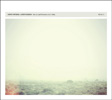 Considering Roden's recent album Proximities, an abstract, lo-fi piece of sound art, this is an odd step. Created through studio improvisations that were explicitly aimed at avoiding electronic instruments, it becomes a very different beast, which is made even more apparent once actual vocals appear, for better or worse.
Considering Roden's recent album Proximities, an abstract, lo-fi piece of sound art, this is an odd step. Created through studio improvisations that were explicitly aimed at avoiding electronic instruments, it becomes a very different beast, which is made even more apparent once actual vocals appear, for better or worse.
The vocal component comes in the form of Japanese jisei poems:texts written by monks on their deathbeds.Rather than read in the traditional sense, these poems were cut up and randomly sequenced, becoming less about words and more about the phonemic sounds that comprise them.
While there was an avoidance of electronic instrumentation throughout, there are still moments that mimic synthetic sounds, such as the droning mid-range and slightly dissonant layers of "Winds Through Bleak Timber."The pseudo-electronic sounds are mixed with obvious organic ones, namely acoustic guitar and what sounds like snapping wooden twigs.
"Fade Away Within" does away with the more identifiable elements and instead uses what I assume to be found percussive noises via field recordings and subtly twinkling wind chimes.It definitely has a drifting, droning quality to it, and is quite abstract, but there is an airy, open spaciousness to the sound that keeps it interesting.
This sense of space appears again on "Water Veins," where shimmering chimes are paired with quietly plucked strings, all of which hover delicately like clouds on a clear day.On the closing "Two Or Three Fireflies," the sparse notes and hollow found textures actually converge into the quietest piece here, which is no small feat given the three pieces preceding it.
Now, I must admit personally, I would have enjoyed this album more without the vocals.While there's nothing inherently wrong with the higher-register intonations used by both Peters and Roden, it just stylistically never works for me with male vocalists as opposed to female ones, making them more of a distraction.However, they are used sparingly throughout, especially on the final two tracks, so it’s not a deal breaker for me, but it does hinder an otherwise brilliant album for me.
Even with the vocals, Not A Leaf Remains As It Was is a beautifully sparse album, and its avoidance of electronic instrumentation makes for a more complex, nuanced experience.Trying to identify what is making the sounds leads to more deliberate listening, and thus becomes a beautifully engrossing record.
samples:
 
Read More
- Administrator
- Albums and Singles
The World Awake! / 11 Stueck is a new double album from Reformed Faction, the duo of Robin Storey and Mark Spybey.
The World Awake! was originally intended for a vinyl release and recorded from improvisations made on one day in November of 2009. 11 Stueck was compiled from improvisations made on December 1st 2009, with drummer Christian Alderson and bass player Oscar Ruiz Fernandez. The Austin Texas based musician Tony D’Oporto, aka Gnome, also appears on one track. The work references the writing of Henry Miller, in his aptly entitled essay, "With Edgar Varese in the Gobi Desert:"
"The World Awake! Just to repeat that to yourself five times a day is enough to make an anarchist of you. How would you awaken the world – if you were a musician? With a sonata for rusty tin openers? Have you ever thought about it? Or would you rather remain asleep?"
"We have been educated to such a fine – or dull – point that we are incapable of enjoying something new, something different, until we are first told what it’s all about. We don’t trust our five senses. We rely on our critics and educators, all of whom are failures in the realm of creation." Varese said, "What should be avoided; tones of propaganda. As well as any journalistic speculation on timely events and doctrines. I want the epic impact of our epoch, stripped of its mannerisms and snobberisms…. Imagination is the last word."
This first edition of The World Awake/11 Stueck is presented in a high-quality screen printed sleeve with printed slipcases for each disc. It is limited to 444 copies.
More information here.

Read More
- Administrator
- Albums and Singles
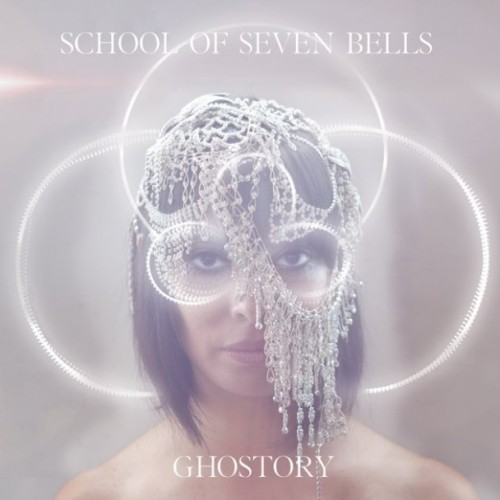 Now on their third full-length, School of Seven Bells have evolved into playing a sleek, manicured style of dream-pop constructed with the live experience in mind. While I have mixed feelings on the album start to finish, Ghostory does contain some powerful moments within its palette of sounds.
Now on their third full-length, School of Seven Bells have evolved into playing a sleek, manicured style of dream-pop constructed with the live experience in mind. While I have mixed feelings on the album start to finish, Ghostory does contain some powerful moments within its palette of sounds.
School of Seven Bells began five years ago as a collaboration between guitarist/producer Benjamin Curtis (ex-Secret Machines) and twin sisters Alejandra and Claudia Deheza (ex-On!Air!Library!). Its members met while opening for Interpol on their 2004 world tour, when I first saw both bands play in my college years. Since then, SVIIB have released two excellent albums—Alpinisms and Disconnect from Desire were each among my favorites in their years of release—and continued evolving since then. I have always been impressed by their live show, which trades the ethereal swoon of their albums for a louder, far more physical experience; the addition of a live drummer in 2010 only heightened the impact. Founding member Claudia Deheza left the band shortly thereafter, and Ghostory is SVIIB's first album without her input, leaving the door wide open for a stylistic departure.
As it turns out, SVIIB have simply taken their sound in a more pop/rock direction, rather than change the formula wholesale. The gently ascending, hypnotic melodies that were commonplace on Alpinisms ("Iamundernodisguise," "Prince of Peace") have been phased out, replaced by taut verse-chorus structures all around, each song streamlined for immediate impact and accessibility. The single exception, "Reappear," is a gorgeous piece of ambient songcraft, accented by a blanket of synths and floating vocal melody. The band's signature harmonies, which had been under the spotlight since On!Air!Library!'s self-titled album in 2004, are not frequently present, and when Deheza layers her vocals over one another with studio loops and effects, it feels somehow less organic with only one person in the studio. Mostly, I miss the woozy production of the band's early albums, which leaned toward early '90s shoegaze and dream-pop. Here, those ingredients have been reduced in favor of punchy, rock-centric production, courtesy of Ben Curtis' brother (and former Secret Machines bandmate) Brandon Curtis, as well as more prominent drums.
The standout tracks on Ghostory are those that match, and occasionally exceed, the band's previous experiments with pop song structures. First single "The Night" kicks off the album with style—a bouncy bass line and electronic drums accented by brushstrokes of guitar and Deheza's often unintelligible vocals. Later, "Lafaye" does it one better, its ethereal mood backed by flat-out gorgeous harmonies, its lyrics detailing Lafaye, the album's central character in a generally undetectable story arc: "You have the blood of intuition / with a name that branded you / and the familiar unfamiliar / would be the only thing you knew," before Deheza's cries of "Laaa-fayeeee!" envelop the chorus. "Low Times" and "White Wind" benefit most from the album's driving production, and are well suited to becoming live staples. The sharpest tune is "Scavenger," in which Deheza hurls incisive lyrics at a former lover (or perhaps bandmate): "I know what you are / you're a fake / you're a scavenger / too scared to take part / you only take / 'cause you're a coward."
The closing track on Ghostory, "When You Sing," is one of its best, but also leaves me feeling conflicted. My Bloody Valentine worship is nothing new for SVIIB—check the swooning, tremolo-warped guitars of "Face to Face on High Places" and "Windstorm"—but "When You Sing" takes this to a new level, because its galloping dance rhythm and swirling, euphoric blur of guitars is essentially a Xerox copy of MBV's "Soon." On one hand, I couldn't be more thrilled: "Soon" is one of my favorite pieces of recorded music, and when I turn off my brain and turn up the volume, "When You Sing" hits at least 85% of the same pleasure centers that "Soon" trail-blazed 20 years ago. Still, the whole song feels a bit unoriginal. On past albums, School of Seven Bells cherry-picked a few shoegaze tricks and incorporated them into a unique, compelling sound; "When You Sing" is more akin to loving plagiarism.
Samples:
Read More
- Administrator
- Albums and Singles
Julia Holter second album, Ekstasis, is a collection of songs written and recorded across the span of three years in Los Angeles, California.
Holter's songwriting stems from a mythological reverence of that which is incomprehensibly beautiful. Her Eating the Stars EP (2007) was a first attempt at musically transcribing this beauty, while discovering the honest enjoyment of unadulterated creativity. The anonymous authorship and shimmering gold detail of medieval illuminated manuscripts particularly inspired the ornately-orchestrated pop song mystery of Stars. Holter's debut album Tragedy (Leaving Records, 2011) embraced similar strains of shimmer, but used sparser textures in a narrative context.
Ekstasis marks a return to the playful searching of Stars, but guided by newly-learned disciplines, slightly better technology, and nearly limitless home recording time. Formative experiences at Cal Arts studying with Michael Pisaro and in India singing with harmonium under guru Pashupati nath Mishra marked a slight detour for Holter in what started as a more traditional composition route. The trajectory leading to the creation of Ekstasis suggests her thirst for knowledge and experience.
While Ekstasis reflects the conventions of her classical training, the album is also uncannily, if unknowingly, poppy. Holter's approach to crafting the songs of Ekstasis centered around what she describes as, "open ear decisions: what seemed to sound best for that moment." This blindness to reference unintentionally steers Ekstasis along the experimental pop spectrum most commonly associated to New York's Downtown music micro-universe of the 80s, specifically the works of Laurie Anderson and Arthur Russell.
With the blindness that leads Ekstasis, there are also many compositional methods at play. "Marienbad" was built while playing around on a Fender Rhodes with imagined imagery of topiary gardens and scenes from the song's film namesake in mind. The entirety of "Boy in the Moon" - the Casio SK-1 noodles, melody, and lyrics - was improvised over a seven minute catharsis. The melody and lyrics for "Four Gardens" were written spontaneously while rearranging an older song on a loop pedal for a live performance. "This is Ekstasis" contains a bass line built from a medieval isorhythm technique, allowing it to maintain a sense of repetition, but shift slightly with every turn.
There is a unique story and approach with each song, but all are united by the magnetism of the medieval manuscripts and Holter's "desire to get outside of my body and find what I can't define." It took Holter stepping outside of her solely self-written and recorded body of music to engage fellow Los Angeles musician and friend Cole M. Greif-Neill in the final phase of Ekstasis. Greif-Neil added perspective and brought out the greatest sonic potential that each song secretly contained. Holter says, "The first time I heard his mix of 'Marienband" the garden became so rich. Suddenly there were bright greens, the statues' edges defined, the fountains pouring..."
Ekstasis is an album indulged in these beautiful, simple, unfolding life mysteries. "All of these fleeting images and muses are so important," says Holter. "As with the manuscripts, when I see them, I hear voices. I am continually following the voices in the gold leaf. I can't know them, but I will follow their beautiful song."
Julia Holter's Ekstasis was released on March 8th, 2012 on RVNG Intl. in 2xLP, CD, and digital formats.

Read More
- Administrator
- Albums and Singles
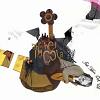 This album aims to recapture a childlike innocence and wonder by combining cartoon sounds with more exciting and grown up arrangements. The result is an enjoyable album that is like bubble gum for the ears, fun at first but it loses its flavor after a short time.
This album aims to recapture a childlike innocence and wonder by combining cartoon sounds with more exciting and grown up arrangements. The result is an enjoyable album that is like bubble gum for the ears, fun at first but it loses its flavor after a short time.
Ache
Jab Mica Och El have captured the playful feelings of childhood well. It’s hard not to bounce on the spot when listening to songs like “Biohjelm Light Speed.” The rhythms aren’t complex but the layering of sounds is, this gives a nice effect of being able to follow the rhythms perfectly easily but there’s enough detail to the pieces to prevent them getting too boring too quickly. There are lots of instruments being used and most of them get treated and chopped up (well the audio gets chopped up, not the instruments) by the duo which gives a lot of fun sounds. “Haircut from the Above” is a good example of this, there are all sorts of brass instruments, guitars and percussion being used as well as many mystery sounds that could be anything from toys to the same instruments put through a load of effects.
This is not music that I would sit down and listen to on headphones in order to ruminate on its finer points. It’s just a welcome bit of fun, fun being a word foreign to most serious musicians. As ABC Hej I’m Cola is only half an hour long, I found it is the perfect length to put on while doing something else, especially something boring (as it isn’t very intrusive so it is easy to concentrate on something else) or while cooking (although I did make a bit of a mess trying to stir fry in time to the music).
However, it’s easy to overdose on the music here. While, as mentioned above, there are a lot of interesting sounds used on the album, the simple song structures means that the pieces can sound a bit stale after a few listens. Taking a break for a few days allowed me to go back and enjoy it but I wonder what sort of lifespan this album will have. For the meantime I will enjoy it and even if I grow tired of it at least I will have gotten some value from ABC Hej I’m Cola.
samples:
Read More
- Administrator
- Albums and Singles
 Volcano the Bear continue their esoteric but quickly comprehendible sounds and structure via this lathe-cut 8" single, the debut release on the Alt.Vinyl label. This is the second piece of seven inch VTB vinyl in a many months to come out of the North East of England, and shows the band investing solid musical experiments with new labels, outside of their regular album schedule.
Volcano the Bear continue their esoteric but quickly comprehendible sounds and structure via this lathe-cut 8" single, the debut release on the Alt.Vinyl label. This is the second piece of seven inch VTB vinyl in a many months to come out of the North East of England, and shows the band investing solid musical experiments with new labels, outside of their regular album schedule.
The hybrid sound of the plucked strings on the verge of retirement and moaning wind instrument that begins "My Favourite Lungs" has a spindly spidery European / British sound. Skipping the needle from the start to the end of this track, while not advisable, shows a song utterly removed from its original sounds. A building gnawed-at line of plucked strings and (what could be) an electronic Rhodes take the song in the direction of a huge exploding kick-up-the-arse finale. Ever the non-conformists "My Favourite Lungs" never reaches this point, stopped dead in its tracks by the band.
"Massive Furniture Invasion" is ripe for soundtrack picking by some bearded Hollywood mogul. The band’s ability to match a tune that can stand up by itself with odd instrumentation is ideally constructed for thematic purposes. These short melodic themes are then deconstructed, nightmarish strands pulled over the original piece. The treble calls and squalls are like a mass of moving parts, the song settling into a loose limbed whistling march through their local graveyard.
samples:
 
Read More

